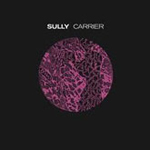|
|
 |
Dusted Reviews
Artist: Sully Album: Carrier Label: Keysound Review date: Oct. 20, 2011 |

|
|
|
 |
Scouring YouTube for classic rave tracks, one is often rewarded not only with the deeper cuts but also with hilarious, endearing comments from aged former ravers. The Brits, in particular, seem to harbor a strong national nostalgia for the early 1990s, and most every lost-and-found find has a dad or three chiming in about the good old days when they would “head off to Ronson’s to throw had a dozen few pils down our neck” or dance in a muddy field ‘til sunrise. In ways few Americans can imagine, club culture took off there like wildfire, the plague or energy drinks — we had grunge, they had rave. A cursory glance through Simon Reynolds’ Generation Ecstasy reveals tales of massive electronic anarcho-crust festivals in the woods, chill-out parties in people’s houses attended by 500-plus kids all coming down on E, and chart topping hits by goofy electro-hippies.
This history has become a gold mine for a new breed of producers in the past five or so years. After the rush of modernism and innovation that was the ‘90s, many are returning to the hallmark sounds of that era, finding new directions in the detritus of a past generation. In the face of minimal’s drab order and dubstep’s early machismo, Zomby highlighted the joy of the sugar rush on Where We U in ‘92, and of course Burial has built a career lamenting the urban alienation no amount of raving and pill-popping can eradicate.
Somewhere between these two lies Jack Stevens, a.k.a. Sully. On his new album, Carrier, he plays with U.K. history quite a bit, drawing parallels between jungle’s politically-charged urban warrior-isms, dubstep’s recent forays into Chain Reaction territory, garage weirdness and Chicago’s wave of footwork (a local scene that has invigorated the international underground). Building his album around spare, ominous thud ‘n’ itch drum patterns, barely-there vocal clips and Goldie-worthy movie samples, Stevens suggests an ominous and reflective mood that is very 2011 while using tools and structures that could often pass for an unearthed ‘90s classic.
This is particularly true for the album’s first half, which lacks the overt footwork tribute. “2Hearts” especially reminds me of Where Were U, sampling Art of Noise’s “Moments in Love” and a lone diva, then pairing them against a punchy garage shuffle. Add dramatic Aphex chords, and boom, you’ve got a plaintive trot through a lost utopia that never was. The yearning, the bleak weather, the kabab shops, the track suits… all duly conjured up.
The only thing is, it feels a bit pat. I don’t really know what I’m supposed to do with Sully’s moodiness. Often, he gets caught up in the track-iness of his tracks, focusing as much on neat little tricks as he does on emotional impact. “In Some Pattern” is a great example. Very much in some pattern, it skips around a snappy new jack swing-infused beat, with lots of horn stabs and mini-motifs dancing about. It’s got a nice groove, and some human character (although not a lot). It’s the most overtly energized track on the album, thus suggesting body movement, but it coasts through its parts as if Stevens is giving us a tour of his house. “Here’s the verse, here’s the chorus, here’s the bridge, maybe we should adjourn to the verse?”
What ties it together (or unravels it, depending on your tastes) is his stylistic interplay. Stevens’s blending of his disparate genres is seamless, and the record flows without any lags or major dips in quality. The footwork element that creeps in midway and thereafter makes itself overt seems a little questionable, but it depends on how you feel about such appropriation. “Scram” splits the difference between footwork and jungle in a way that illuminates the overlap between the two, but it doesn’t feel like much more than a technical exercise. Then again, I wonder how I would react if someone told me Sully was from Chicago.
Stevens’s personality emerges from the mishmash on Carrier’s strongest songs, “Trust” and “Exit.” “Trust” is all coda, start to finish; ending even as it’s beginning, it seems ever-vanishing, but is tied together with some Drake-esqe chords and a distant piano. “Exit” opens sounding exactly like Burial vocals over a classic DJ Shadow cut from Preemptive Strike. It effortlessly ties together 20-odd years of electronic music, although in a way that Shadow himself did back in the day: a mournful, spacey, introspective cut ‘n’ paste, and the feeling you have so much to say even after history has said it all.
By Daniel Martin-McCormick
|







